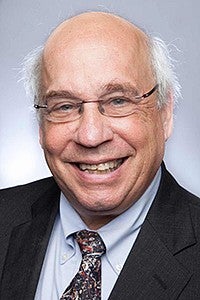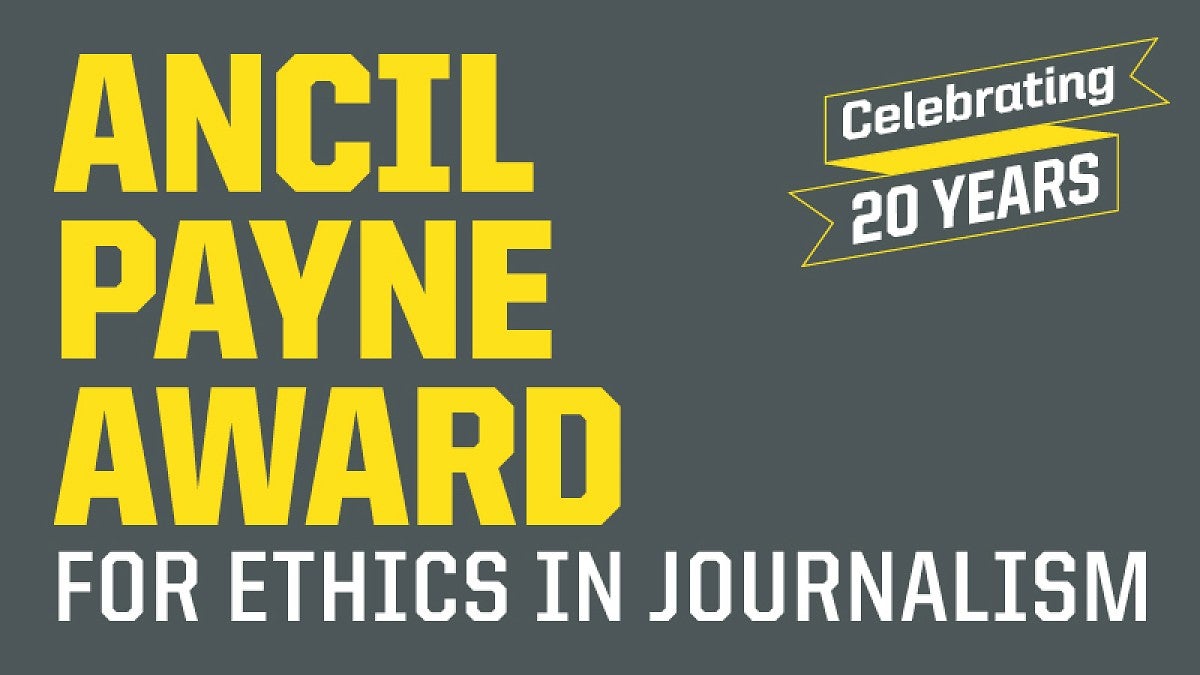In June 2019, reporters Emily Hoerner and Rick Tulsky of Injustice Watch published the results of an investigation into racist, homophobic, misogynistic and violent content that police officers around the country posted on their personal social media accounts.
“In Plain View” earned Injustice Watch journalists Hoerner and Tulsky the School of Journalism and Communication’s Ancil Payne Award for Ethics in Journalism, which is celebrating its 20th anniversary this year.
Established in 1999 by the family of Seattle broadcasting legend Ancil Payne, the award recognizes the tough choices journalists make behind the scenes to meet the rigorous ethical standards of the journalism profession and bring the truth to the public despite personal, financial, legal or political pressures.

The main source for “In Plain View” was the Plain View Project, a database of alarming social media posts published by police officers in eight cities. With sponsorship from a foundation, Philadelphia lawyer Emily Baker-White began the project to examine whether the frequency of posts had the potential to endanger public trust.
Using the database as a starting point, Hoerner and Tulsky conducted meticulous research to ensure the accuracy and authenticity of the social media posts. They also examined the civil rights records of officers who made concerning posts to investigate if there was a connection between their words and actions.

An adverse ruling in a potential lawsuit could shut down the small newsroom. Hoerner and Tulsky faced a difficult decision: Should they hold the information back from the public to protect Injustice Watch or bring the truth to light and risk the legal and financial implications?
“The question seemed to answer itself,” Tulsky said. “We could not let the potential threat of a lawsuit stop us from work that was meritorious and in the public interest.”
To ensure the publication of the story, Injustice Watch became the nonprofit fiscal sponsor of Baker-White’s database and purchased libel insurance.
Injustice Watch and its publishing partner BuzzFeed News published “In Plain View” at a time when the U.S. Department of Justice regarded the divisions between communities and law enforcement officials as a significant issue in several urban cities. Hundreds of news outlets reported on the project after the small media outlet broke the story, including The New York Times and The Washington Post.
As a result, police officials across the country reviewed Facebook posts, disciplined hundreds of officers and fired more than a dozen. Police departments around the nation also instilled stronger policies about officers’ social media use.
One Pennsylvania officer did sue Injustice Watch, accusing it of casting him in a false light. Despite the cost of legal representation, Hoerner and Tulsky felt it was important to defend their work. In January, a federal district judge dismissed the case, ruling that the officer’s allegations could not lead to a libel verdict.
“Nothing takes away from the fact that we stood up for the First Amendment, published work that had tremendous impact and then stood up for the legal right to publish such work,” Tulsky said.
The Ancil Payne Award Selection Committee, which includes working journalists and journalism educators, also recognized journalists Angela N. Fu, Kristine E. Guillaume and Jamie D. Halper of The Harvard Crimson as finalists.
The Harvard Crimson, a daily student-run newspaper at Harvard University, covered a rally organized by Act on a Dream, a campus group that advocates for the abolition of U.S. Immigration and Customs Enforcement. To ensure integrity, fairness and accuracy in reporting, The Crimson journalists reached out to the agency for comment on the protest.
This was not popular with the protesters or other Harvard students. Although the editors of The Crimson met with students to explain their reasoning, students called for a boycott of the paper. Despite intense pressure, Fu, Guillaume and Halper held resolute in their position and posted “A Note to Readers,” justifying their decision to follow up on both sides of the story as standard journalistic practice.
“It can be hard for most people, including most working journalists, to appreciate the power of the peer pressure undergraduates are exposed to if they veer from socially defined norms to uphold journalistic standards,” said Bob Ortega, senior writer for CNN Investigates and a member of the Payne Award Selection Committee.
A focus on difficult ethical choices sets the Payne Award apart from other national journalism awards.
“This year’s Payne Award winner and finalist highlight the impact of good journalism when journalists make tough ethical decisions in the face of significant pressure,” said Tim Gleason, journalism professor and director of the Payne Award. “It was encouraging to see in this year’s Payne Award nominees the great work being done at news organizations of all shapes and sizes across the country. With journalism facing an unprecedented set of challenges, journalism ethics have never been more critical to the SOJC’s mission."
—By Kyra Hanson, School of Journalism and Communication


